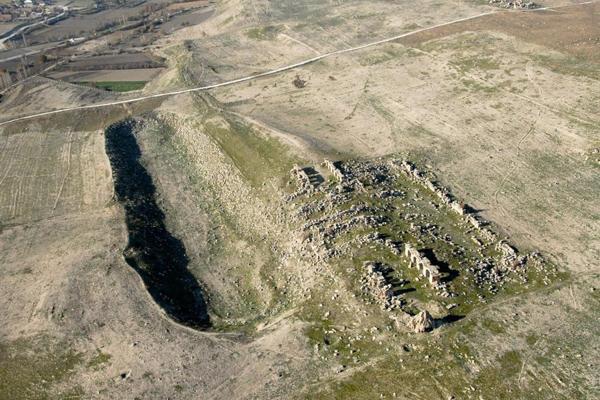Historic road to ancient stadium comes to light
DENİZLİ


The street that provides access to Anatolia’s largest ancient stadium, the Laodicea Stadium, is being unearthed. The stadium is located next to the ancient city of Laodicea and has a capacity of 25,000 to 30,000 people.
A site on the UNESCO World Heritage tentative list since 2013, the ancient city is home to one of the seven churches mentioned in the Bible. Since 2003, the excavation and restoration work in the ancient city in the western province of Denizli was carried out by a team headed by Celal Şimşek, professor and president of the archaeology department at Pamukkale University (PAU).
So far, a church, theater and sacred agora are among the ancient buildings that have been unearthed in Laodicea, which is the largest ancient city after the world-known Ephesus.
In 2015, it was chosen as the best ancient city for tourists, and in 2016, it won an award from the Europa Nostra due to the restoration and conservation work carried out on the Laodicea Church.
Şimşek, the head of excavations in Laodicea, said that excavations and restoration work will continue in the ancient city throughout the year.
The Laodicea Stadium, which was built in 79, is 285 meters long and 70 meters wide with a capacity of 25,000 to 30,000 seats, he said.
One of the most important projects this year is to open the ancient road that provides transportation to the stadium, he said.
Next to the stadium is the huge closed bath complex, which covers a closed area of 12,000 square meters, said Şimşek. The area is also home to an assembly building and a state guest house.
“We aim to complete the excavation and restoration of Stadium Street and provide access to the 2,000-year-old stadium via the ancient road,” the professor said.
After leaving Syria Street, visitors will continue on Stadium Street to reach the largest ancient stadium in Anatolia, the south bath complex, parliament building and agora, he said. He said workers are scheduled to finish the project by the end of 2019.
“This way, there will be a new excursion route for tourists coming to both Denizli and Anatolia,” he said.
Şimşek emphasized the historical importance of Laodicea Stadium. Inscriptions indicate that the stadium served as a venue for Olympic-scale events and gladiatorial fights.
“Laodicea has a very important place and reputation in the ancient world for gladiator fights both with each other and wild animals. When we complete this work, we will be able to easily reach these huge structures by passing through the main streets that were built thousands of years ago.”
